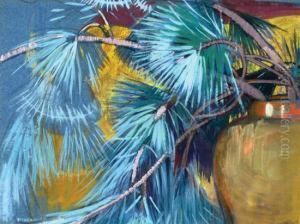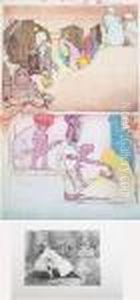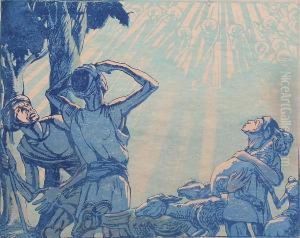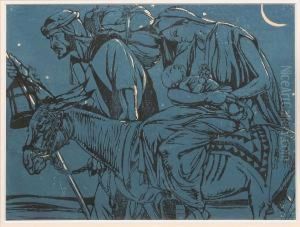Mabel A. Royds Paintings
Mabel Allington Royds was an English artist, known for her woodcuts and contributions to the revival of color woodblock printing in the early 20th century. Born in Bedford, England, Royds initially pursued her education at the Slade School of Fine Art in London, where she developed her skills in painting and printmaking. Her artistic journey led her to further her studies in Paris, immersing herself in an environment that was rich in artistic innovation and experimentation.
After her time in Paris, Royds took a significant step in her career by moving to Edinburgh, Scotland, where she joined the staff of the Edinburgh College of Art. It was here that she met her husband, the artist Ernest S. Lumsden, with whom she shared a passion for printmaking and travel. Together, they embarked on extensive travels to India and the Middle East, experiences that deeply influenced Royds' artistic vision and subject matter. Her travels inspired a series of woodcuts that depicted scenes of India, capturing the vibrancy and spirit of its people and landscapes with bold colors and dynamic compositions.
Royds' work in the realm of woodcut printing was notable for her innovative use of the color woodblock technique. She adopted and adapted the Japanese method of woodblock printing, which allowed for a rich palette and intricate details. Her prints often featured floral designs, religious themes, and scenes from nature, characterized by their vivid colors and stylized forms. Royds was a part of the British color woodcut movement, contributing significantly to its popularity and development during the early decades of the 20th century.
Throughout her career, Mabel A. Royds exhibited her work widely, gaining recognition and acclaim for her distinctive style and technical mastery. Her contributions to the field of printmaking and her exploration of color woodblock printing have left a lasting legacy, influencing subsequent generations of artists. Despite her death in 1941, Royds' work continues to be celebrated for its beauty, craftsmanship, and unique blending of Western and Eastern artistic traditions.












